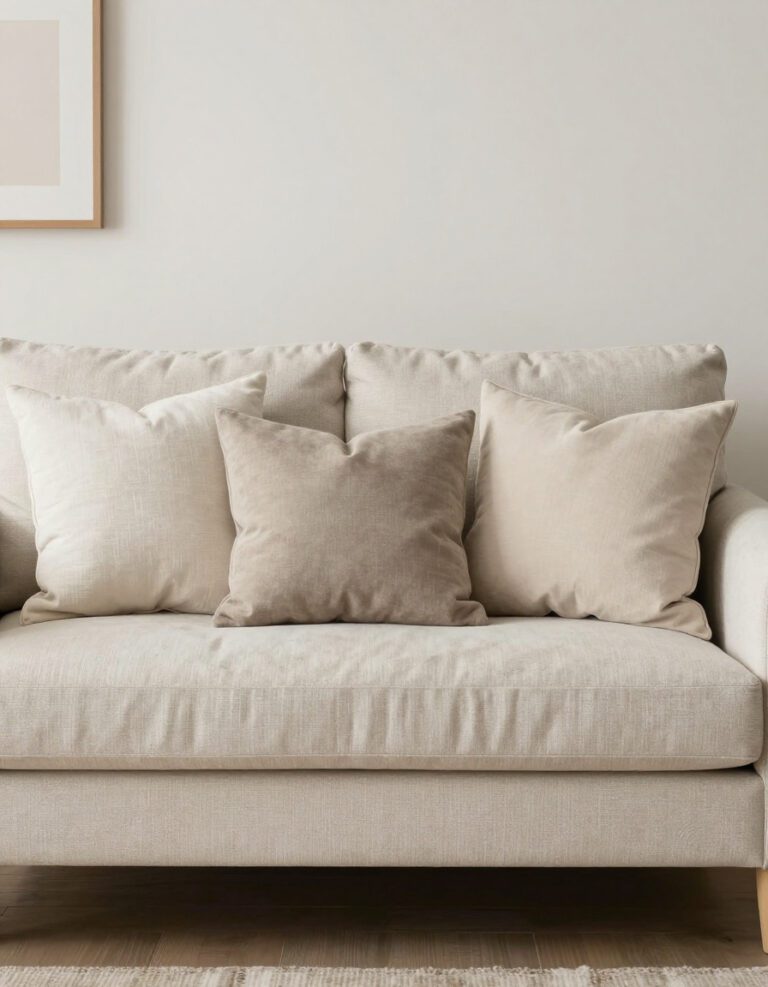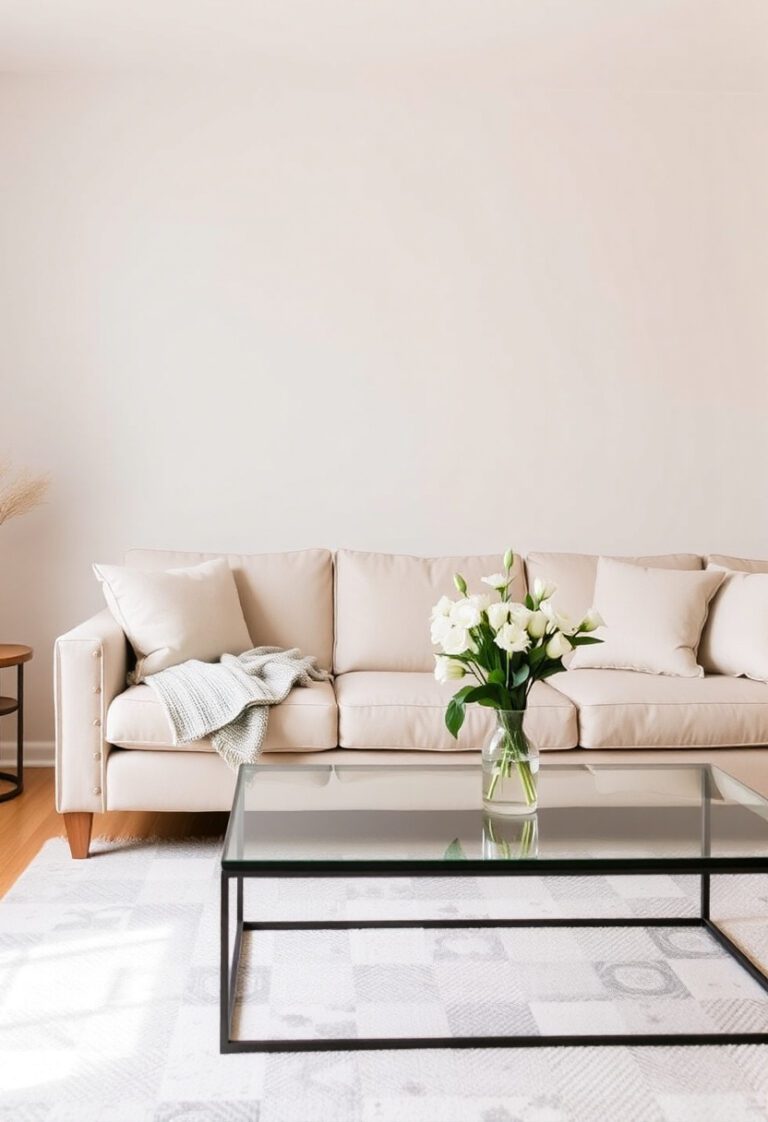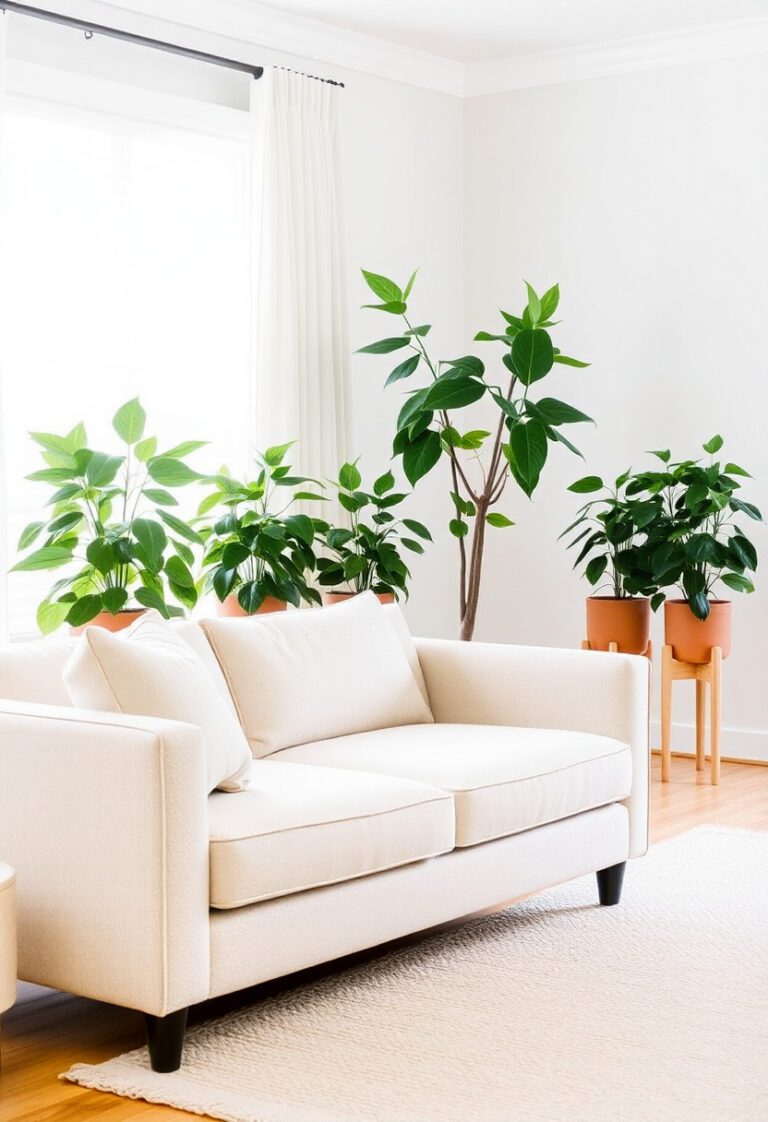Creating a harmonious living space that successfully marries vintage charm with contemporary functionality is an exciting design challenge. Learning to blend old and new in your living room decor allows you to craft a unique space that tells your personal story while maintaining modern comfort and style. This approach creates depth, character, and visual interest that purely modern or traditional rooms often lack.
The key to mastering this design philosophy lies in understanding balance, proportion, and the subtle interplay between different eras. When executed thoughtfully, this eclectic approach transforms your living room into a curated space that feels both fresh and rooted in history.
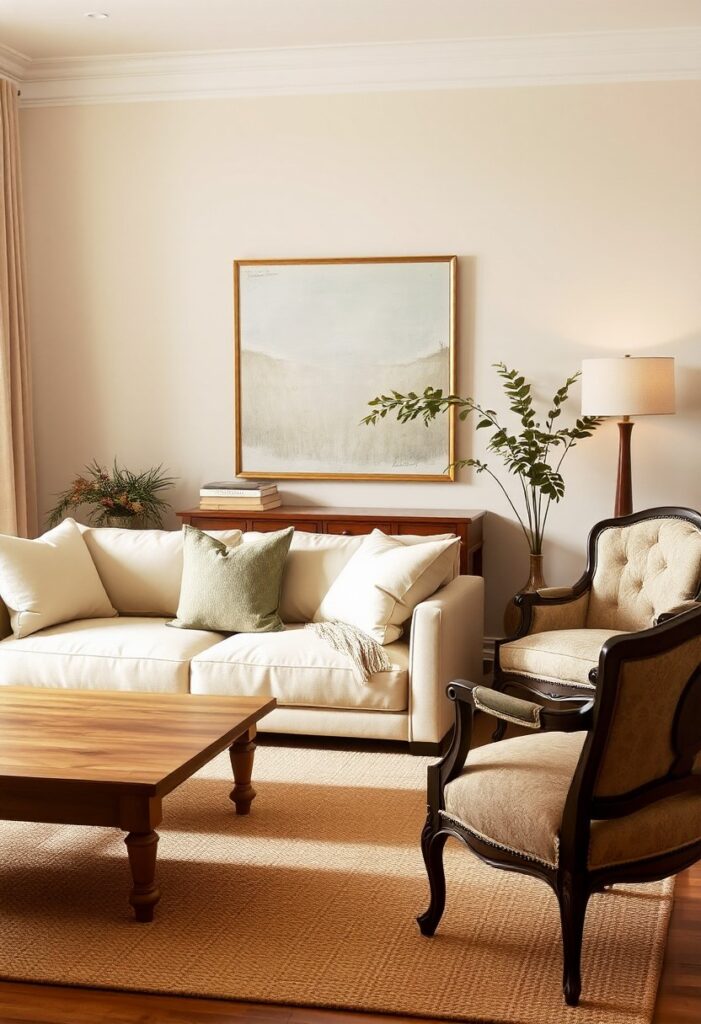
Understanding the Foundation of Transitional Design
Transitional living room design serves as the perfect framework for combining old and new elements seamlessly. This style acts as a bridge between traditional and contemporary aesthetics, allowing you to incorporate cherished family heirlooms alongside sleek modern purchases. When you successfully blend old and new in your living room decor through transitional design, you create a lasting foundation that accommodates both vintage treasures and contemporary functionality.
The foundation begins with establishing a neutral color palette that can accommodate both vintage and contemporary pieces. Soft grays, warm whites, and earthy tones create a cohesive backdrop that allows individual pieces to shine without competing for attention. This neutral approach is essential when you want to blend old and new in your living room decor effectively.
Consider your room’s architecture when planning your blend. Older homes with crown molding and hardwood floors naturally complement vintage pieces, while contemporary spaces with clean lines can benefit from carefully chosen antique accents that add warmth and character.
Strategic Furniture Placement and Selection
Mixing modern and vintage furniture requires a strategic approach to avoid creating a chaotic or disjointed appearance. Start with your largest pieces first, such as your sofa or coffee table, and build around them. Successfully learning to blend old and new in your living room decor means understanding that each piece should complement rather than compete with others in the space.
Choose one era to dominate your space while using the other as an accent. For example, if you have a stunning mid-century modern sofa, complement it with a contemporary coffee table and vintage side tables. This creates visual rhythm while maintaining balance.
Pay attention to scale and proportion when combining pieces from different periods. A massive Victorian armoire might overwhelm a minimalist modern sofa, while delicate antique chairs could get lost next to a chunky contemporary sectional.
Consider the functional needs of your family when selecting pieces. Modern furniture often offers superior comfort and durability, making it ideal for high-use items like sofas and dining tables, while vintage pieces can serve as accent furniture or decorative elements. This practical approach helps you blend old and new in your living room decor without sacrificing functionality.
Mastering Color and Texture Combinations
Color coordination is crucial when learning how to blend old and new in your living room decor effectively. Establish a cohesive color story that can accommodate both vintage and contemporary pieces. The most successful designers understand that color serves as the unifying thread that makes disparate elements feel intentional and harmonious.
Start with a neutral base and add color through accessories, textiles, and smaller furniture pieces. This approach allows you to experiment with different combinations without committing to permanent changes.
Texture plays a vital role in creating visual interest and cohesion. Mix smooth, sleek surfaces from modern pieces with the rich patina and varied textures of vintage items. A sleek leather sofa can beautifully complement a weathered wooden coffee table, while contemporary metal accents can enhance antique brass elements.
Layer different textures through throw pillows, blankets, and rugs to create depth and warmth. This technique helps bridge the gap between different styles and time periods. Mastering these layered living room aesthetics is crucial when learning to blend old and new in your living room decor successfully.
Use Lighting to Bridge Old and New Styles
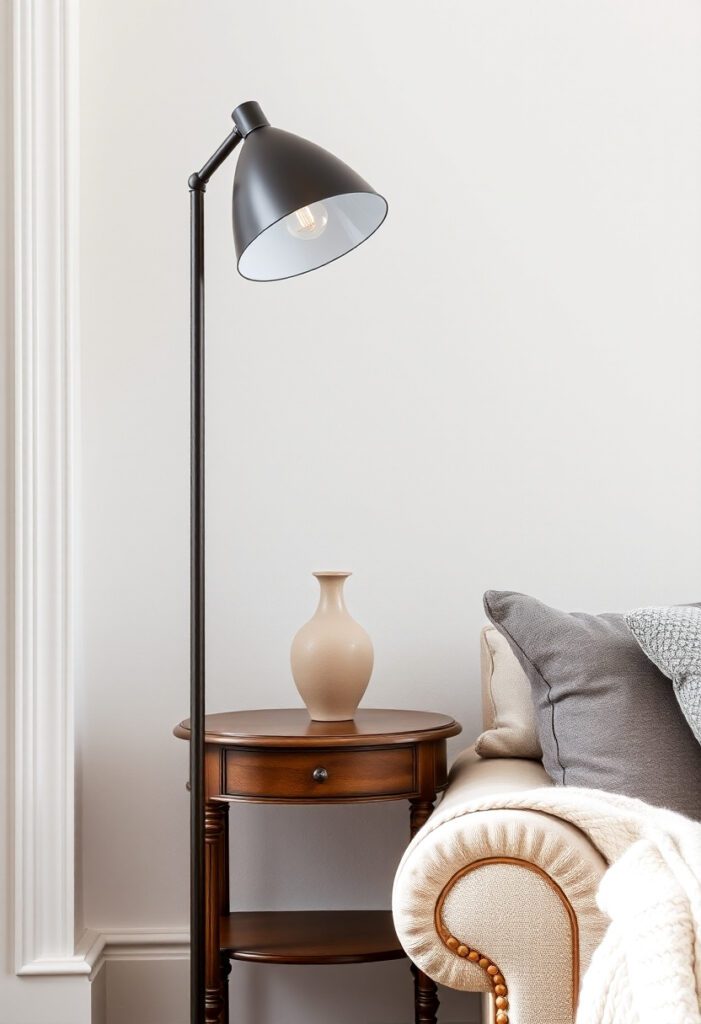
Lighting serves as one of the most effective tools for unifying disparate elements in your living room. Combine vintage fixtures with modern lighting solutions to create layers of illumination that enhance both old and new pieces.
Consider installing contemporary recessed lighting to provide ambient illumination while showcasing vintage table lamps or floor lamps as accent pieces. This approach ensures adequate lighting while maintaining the character of older fixtures.
Use lighting to highlight specific pieces or create focal points. A modern track lighting system can beautifully showcase a vintage bookshelf or antique sideboard, while a statement chandelier can serve as a bridge between different style periods. Strategic lighting choices make it easier to blend old and new in your living room decor harmoniously.
Accessory Integration and Styling Tips
Eclectic living room style tips often focus on the power of accessories to tie different elements together. Books, plants, textiles, and decorative objects can serve as connective tissue between various style periods.
Group accessories in odd numbers and vary their heights to create visual interest. Mix vintage ceramics with modern sculptures, or combine antique books with contemporary candles to create layered, interesting displays.
Be selective with your accessories to avoid overwhelming the space. Each piece should serve a purpose, whether functional or aesthetic, and contribute to the overall harmony of the room.
How to Successfully Blend Old and New in Your Living Room Decor
When incorporating antique pieces into contemporary spaces, consider their placement and surrounding elements carefully. Antique furniture often works best when it has room to breathe and isn’t crowded by too many other decorative elements. The key to successfully blend old and new in your living room decor is giving each piece adequate visual space to shine while maintaining overall harmony.
Update antique pieces subtly to improve their functionality without compromising their character. Reupholster chairs in contemporary fabrics, or add modern hardware to vintage storage pieces to enhance their usability.
Position antique furniture where it can serve as a focal point or conversation starter. A beautifully restored vintage chest can serve as a coffee table, while an antique desk can create a sophisticated workspace within your living room.
Creating Cohesion Through Repetition
Repetition of elements helps create unity when combining old and new decor. Repeat colors, materials, or shapes throughout the space to establish visual connections between different pieces.
For example, if you have brass accents on your vintage furniture, incorporate brass elements in your modern lighting or hardware. This creates a thread that ties the room together despite the different time periods represented.
Use similar wood tones or finishes to create harmony between pieces. While the styles may differ, consistent materials help establish a cohesive look that feels intentional rather than accidental. This material consistency is one of the most effective ways to blend old and new in your living room decor seamlessly.
Modern Vintage Living Room Ideas for Every Budget
Budget-conscious decorators can achieve stunning results by focusing on key pieces and strategic updates. Start with affordable modern basics and gradually add vintage finds from thrift stores, estate sales, or online marketplaces. The beauty of learning to blend old and new in your living room decor is that it doesn’t require a complete room overhaul or expensive designer pieces to achieve professional-looking results.
DIY projects can help bridge the gap between old and new. Paint vintage furniture in contemporary colors, or reupholster antique chairs with modern fabrics to create unique pieces that fit your aesthetic. These creative solutions allow you to blend old and new in your living room decor on any budget.
Invest in quality foundational pieces that can accommodate changing accessories and accents. A well-made modern sofa or dining table can serve as a backdrop for rotating vintage accessories and seasonal updates.
Avoiding Common Pitfalls
Combining old and new decor requires careful consideration to avoid creating a space that feels disjointed or cluttered. Resist the urge to fill every surface with decorative objects, as this can make the space feel chaotic. When you effectively blend old and new in your living room decor, restraint becomes just as important as selection.
Maintain consistent proportions and scale throughout the room. Mixing too many different scales can create visual confusion and detract from the overall harmony you’re trying to achieve.
Don’t feel obligated to match everything perfectly. The beauty of this approach lies in the thoughtful juxtaposition of different elements, not in creating a perfectly coordinated showroom look.
Conclusion
Successfully blending old and new in your living room decor requires patience, planning, and a willingness to experiment. By understanding the principles of balance, proportion, and cohesion, you can create a space that honors the past while embracing the present. This approach to interior design allows you to blend old and new in your living room decor in ways that reflect your personal journey and create meaningful connections between different periods of your life.
Remember that this process is evolutionary. Your room will develop and change as you discover new pieces and refine your aesthetic preferences. The key is to remain true to your personal style while respecting the inherent character of both vintage and contemporary elements.
With these strategies and insights, you can confidently create a living room that reflects your unique perspective while providing comfort and functionality for your daily life. The result will be a space that feels both fresh and familiar, sophisticated and approachable.
For cozy living room ideas, see 14 Cozy Living Room Ideas That Feel Warm and Welcoming.
Frequently Asked Questions
Q: What’s the ideal ratio of old to new pieces in a living room? A: There’s no strict rule, but a good starting point is the 70-30 ratio. Choose one era to dominate (70%) and use the other as an accent (30%). This creates balance while maintaining visual interest.
Q: How do I know if two different furniture pieces will work together? A: Look for common elements like color, material, or scale. If pieces share at least one connecting element, they’re more likely to work harmoniously together, even if they’re from different time periods.
Q: Can I mix different wood tones when combining vintage and modern furniture? A: Yes, but limit yourself to no more than three different wood tones in one space. Choose one as your dominant tone and use the others as accents to maintain cohesion.
Q: What’s the best way to incorporate family heirlooms into a modern living room? A: Treat heirlooms as focal points rather than trying to hide them. Give them prominent placement and build your modern elements around them. This honors their significance while creating a cohesive design.
Q: How can I update vintage furniture without ruining its character? A: Focus on functional improvements rather than aesthetic changes. Reupholster worn fabrics, replace broken hardware, or add protective glass tops to wooden surfaces while preserving the original design integrity.
Q: Is it expensive to achieve this mixed style? A: Not necessarily. Start with affordable modern basics and gradually add vintage finds from thrift stores, estate sales, or online marketplaces. Many stunning vintage pieces can be found at reasonable prices with some patience and searching.
Q: How do I prevent my living room from looking like a random collection of furniture? A: Establish a unifying element such as a consistent color palette, repeated materials, or similar scales. This creates visual connections between different pieces and prevents the space from feeling disjointed.


